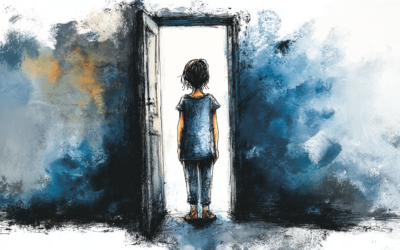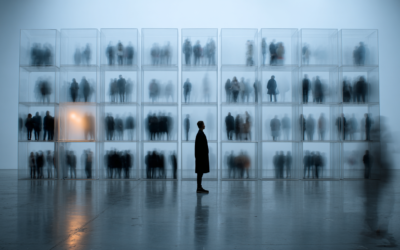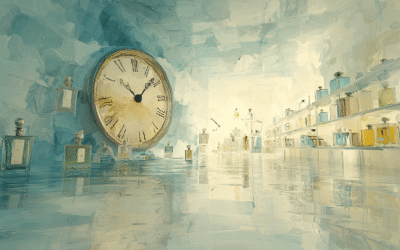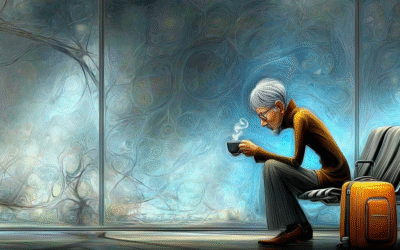Some legacies arrive neatly wrapped — a pocket watch nestled in velvet, a quilt stitched by hands now dust. But others move like ghosts through blood and breath and behavior, shape-shifting with each new birth. They leave no will, no deed of ownership. And yet, they may be the most powerful inheritance of all.
This is one family’s story. It could be many.
The Man Who Could Not Contain Himself
In the beginning was a man who lived two lives. By day, he stood before chalkboards, teaching children the orderly laws of arithmetic. By night, he became chaos incarnate — his rage a force that bent reality in the small universe of his home.
His anger didn’t build like normal anger. It detonated. One moment the air was clear, the next it was thick with ash and fear. And then, most bewildering of all, he would forget — as though the emotional Pompeii he’d just created had never happened.
His children became unwilling experts in the meteorology of mood. They learned to read atmospheric pressure in the twitch of an eyebrow, the subtle tightening around his mouth. They developed a sixth sense for the tremors that preceded eruption. Like medieval sailors charting treacherous waters, they mapped the hidden reefs of his psyche: Here be dragons.
The Daughter Who Turned Inward
One daughter watched particularly closely. Sharp-eyed and wary, she carried these survival lessons into adulthood like contraband.
She felt his fire in her blood sometimes — flashes of such pure, molten rage they shocked her into stillness. But where he surrendered to the flame, she refused its dominion. She would not become her father.
So she learned the alchemy of transmutation. Where he erupted, she calculated. Where he wounded, she negotiated. What might have become destruction became instead a preternatural ability to read others, to sense the invisible currents of emotion running beneath ordinary conversation. The hypervigilance that trauma had taught her became, in time, something like a superpower.
But the body keeps score in ways the mind cannot anticipate.
The unspoken requires energy to remain unspoken. Year after year, the act of suppression — the daily dampening of alarm bells, the constant recalibration of nervous systems — left its signature in her physical form. First came lupus, her immune system turning its weaponry inward, attacking the very tissues it was meant to protect. Later, under the crucible of a high-stress career and a lifetime of emotional contortion, her body began producing cortisol in such quantities that it mimicked Cushing’s syndrome — metabolism warped, mood destabilized, memory compromised.
It wasn’t conscious. It was simply the language of a body that had run out of places to store what could not be said: This is too much.
The Son Who Inherited the Echo
When her son was born, he carried in his cells more than just her sharp eyes and quick mind.
He inherited biological pathways already carved by generations of emotional tempests — immune systems primed for battle with themselves, stress responses set to hair-trigger sensitivity. He grew into a young man with a quicksilver relationship to frustration. His anger, when it came, terrified him even more than those around him.
Where his grandfather had directed the force outward and his mother had folded it inward, he chose a third path: retreat. His mind built elaborate defense mechanisms, creating distance between himself and the emotions he couldn’t trust. Reality began to shift at the edges, becoming permeable, unreliable.
Diagnosis: schizophrenia.
An easy narrative presents itself: damaged people creating damaged children creating damaged minds, a grim determinism playing out across time. But this story is both more complex and more hopeful than such linear thinking allows.
Beyond Linear Inheritance: The Science of Transmission
We once imagined genes as immutable script — DNA as destiny, playing out with mechanical precision across generations. But epigenetics has revealed a far more nuanced picture, one where genes don’t just act; they listen.
Genes respond to environment — to hunger and abundance, to safety and danger, to love and neglect. They can be silenced or amplified by experience, and sometimes, remarkably, these alterations can be transmitted to future generations without changing the underlying DNA sequence itself.
In our family’s story, several biological mechanisms converge:
The grandfather may have carried a low-activity variant of the MAOA gene, sometimes controversially called the “warrior gene,” which regulates the breakdown of neurotransmitters like serotonin and dopamine. This variant doesn’t create violent behavior ex nihilo, but it can weaken the neural brakes on impulsivity, particularly in those who’ve experienced early trauma themselves.
The daughter’s years of emotional terror didn’t just lodge in her memory; they likely altered the chemical markers on her DNA through methylation and histone modification — epigenetic “Post-it notes” that changed which genes were expressed and which remained silent. These modifications primed her immune system for hypersensitivity and her stress response system for perpetual overdrive.
Her autoimmune disease and Cushing-like syndrome weren’t separate biological accidents, but connected manifestations of a system strained beyond its capacity. Chronic stress coupled with emotional suppression created a cascade of physiological adaptations that, over time, became maladaptations. High cortisol and persistent inflammation aren’t content to stay within neat biological boundaries — they reshape entire communication networks throughout the body, including those in the brain.
During her pregnancy, these elevated stress hormones and inflammatory markers crossed the placental barrier, subtly sculpting her son’s developing nervous system. They may have contributed to an overactive amygdala (the brain’s alarm system), an under-regulated prefrontal cortex (the brain’s executive center), and sensitized dopamine pathways (critical for both reward processing and perception).
These invisible alterations — changes you can’t see but that fundamentally change how the world is experienced — laid biological groundwork that later, in combination with his own life experiences, bloomed into schizophrenia.
The Mind Under Siege
We’ve moved beyond simplistic “chemical imbalance” models of mental illness. Schizophrenia is increasingly understood as the manifestation of neuroinflammation, dopamine dysregulation, and disrupted neural pruning — processes intimately connected to immune function.
The grandson’s perceptual world didn’t fracture spontaneously. It fractured under accumulated pressures: genetic vulnerabilities, prenatal influences, chronic low-grade inflammation, and a family legacy where powerful emotions were either dangerous explosions or dangerous secrets.
This isn’t determinism. He had choices. But the menu of available choices was already shaped by rivers carved long before his birth.
Breaking the Pattern: Biology as Possibility
Pain echoes across generations. But so does healing.
The remarkable discovery of neuroplasticity — the brain’s lifelong ability to reorganize itself — offers profound hope. The same biological systems that can be distorted by trauma can be reshaped by new experiences.
Therapy doesn’t just change thought patterns; it can literally alter gene expression. Safe relationships can rewire stress response systems at the level of the hypothalamic-pituitary-adrenal axis. Mindfulness practices can reduce inflammatory markers and help repair neural circuits damaged by chronic fear responses.
Epigenetic modifications aren’t permanent scars but more like adhesive notes — reminders that can be repositioned, softened, even replaced with new information.
The grandson’s diagnosis isn’t the conclusion of a deterministic tragedy. It’s an invitation to look backward with deeper understanding and forward with informed hope. It calls for a family reckoning with its ghosts, not to exorcise them (for memory is too essential for that), but to metabolize their presence into something that no longer poisons the present.
Some legacies arrive unbidden, unwanted. But even the heaviest inheritance can be transformed — not erased, for memory persists, but reshaped into something that allows for a fuller breath, a steadier step.
That transformation may be the most radical act of healing possible: to acknowledge what we’ve been given, to understand its origins with compassion rather than blame, and to choose, consciously, what we will carry forward and what we will gently set down.
Perhaps this is the real inheritance worth passing on — not the absence of wounds, but the courage to tend them honestly, and in so doing, to make them into something new.



